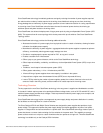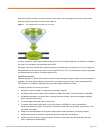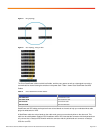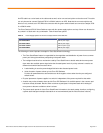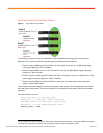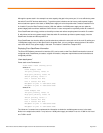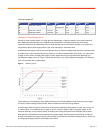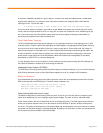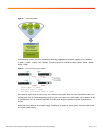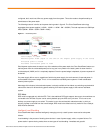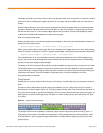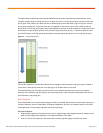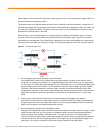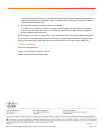
© 2012 Cisco and/or its affiliates. All rights reserved. This document is Cisco Public Information. Page 14 of 17
Immediate load shed occurs when a failure could cause the power stack to fail very quickly, for example a massive
power failure where multiple power supplies go offline for any reason and the available power cannot sustain the
system.
Graceful load-shedding can occur when a power supply fails and forces the power stack to re-evaluate its power
allocations. Switches and powered devices may shut down in order of their default or configured priority, starting
with devices with priority 27, until the power budget matches the input power. Graceful load shedding is always
enabled and immediate load shedding occurs only when necessary.
What is a balanced power stack?
A balanced power stack is one that has a positive power budget; in other words, the available power is equal to or
greater than the allocated power.
Balanced power budget: Available power > Allocated power
When a power stack suffers a power supply failure, the available power budget drops, and if “strict” power sharing
mode has not been configured, the result is a negative power budget, causing the system to become unbalanced.
Negative power budget: Available power < Allocated power
If the allocated power is not currently being consumed, nothing would happen other than IOS messages on the
console, but as soon as the allocated power is demanded by PoE devices, the system will start a load-shedding
process until the power budget is balanced again.
The design of the Cisco Catalyst 3750-X switches includes hardware to assign a priority to every port in the switch.
This hardware allows us to tag ports for high and low priorities, which are set by default but can be programmed
by the administrator. These priorities are used only when the switch or the stack needs to shed power to bring the
system back into balance. Cisco IOS Software will generate plenty of console messages to inform the
administrator about the situation.
Priority Scheme
StackPower has a priority scheme that covers up to nine switches in a data stack and all of the ports in the entire
stack.
Priorities are set by default when the power stack gets created but you can configure the priority of a switch or
powered device to receive power (Figure 12). This priority determines the order in which devices are shut down in
case of a power shortage i.e. graceful load-shedding. You can configure three priorities per system: the system (or
switch) priority, the priority of the high-priority PoE ports on a switch, and the priority of the low-priority PoE ports
on a switch.
Figure 12. StackPower Default Priorities
The Catalyst 3750-X has the capability to create two groups of ports, High priority and Low Priority (Figure 13).
High priority ports are those connected to more important or critical powered devices and are preferred to retain
inline PoE power in case of a power shortage. StackPower or the administrator assigns a priority level to those
groups of ports.



